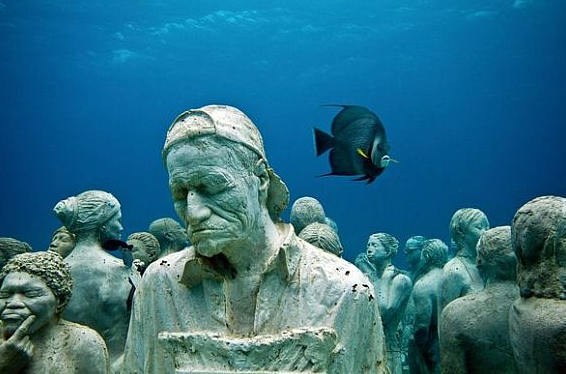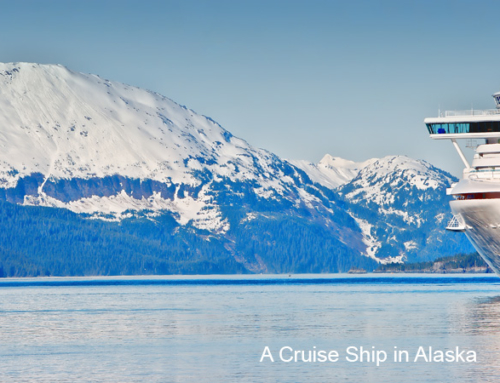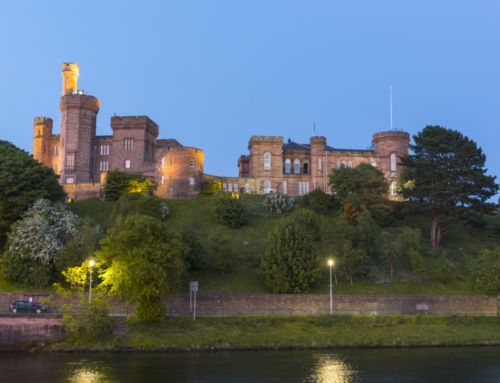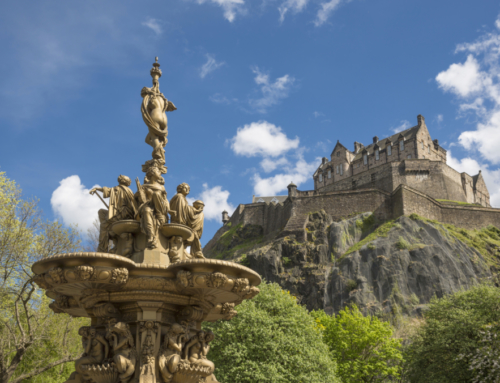(Courtesy Travel + Leisure Magazine)
As you snorkel past coral reefs and angelfish in the warm, shallow waters of the Caribbean Sea, you suddenly come across an eerily beautiful tableau: hundreds of life-size human sculptures. No, this isn’t loot from some sunken pirate ship. It’s the world’s largest underwater museum.
This ingenious twist on Cancún’s popular dive tourism shows that tourism sights get bolder and more innovative each year, often thanks to the involvement of big-name architects, artists, and designers. As destinations vie to create their own “Bilbao Effect,” tourists are getting savvier about what to see and what to skip. It takes more than tall buildings and new museums to titillate today’s tourist.
Even as the Web has increased the visibility of these cool new sights, there’s still no substitute for seeing the real thing in person. Let us point the way.
Cancún’s Underwater Museum, Mexico
The world’s largest underwater museum opened three miles offshore in November 2010 with hundreds of sunken life-size human figures. Artist Jason deCaires Taylor used pH-neutral concrete to create these sculptures, which double as a home for peacock flounder, white telestra coral, and other aquatic life that have becoming increasingly threatened by the 750,000-plus annual divers who visit the National Marine Park’s coral reefs.
Capital Gate, Abu Dhabi
Dubai typically hogs the limelight with its ambitious projects, but now Abu Dhabi is defying gravity with this glassy 35-story landmark—the world’s furthest-leaning man-made tower. The glinting 18-degree tilt (four times more than that of Pisa’s leaning tower) catches your eye among the city’s jumble of skyscrapers and cranes. You can’t miss it on the drive to the Grand Mosque, but to get a peek inside, book a stay at the Hyatt Hotel slated to open in mid-to-late 2011.
Cheetah Hunt Roller Coaster, Busch Gardens, Tampa, Florida
Theme parks invested heavily in new attractions during the recession’s staycation trend, and 2011 sees fruits of those efforts. No new ride has more daredevil spirit than the Cheetah Hunt: a multilaunch coaster that jettisons riders from 0 to 60 mph, corkscrews up 100 feet into a skyscraping figure eight, narrowly grazing over the cable lines for the Skyride, and clips a waterfall before plummet-torqueing into a trench in the park’s Serengeti area. Can we do it again, please?
Metropol Parasol, Seville, Spain
If you want to know what Alice felt like in Wonderland, head to Seville, where a trippy new pavilion has sprung up in the Plaza de la Encarnacíon. Undulating blonde timber structures with a honeycomb roof make up the world’s largest wooden building, known by locals as “Setas de la Encarnación,” or the Mushrooms of Incarnation. It’s home to an archaeological museum, a farmers’ market, and an elevated plaza with bars and restaurants.
11 11 Lincoln Road Parking Garage, Miami
Car culture gets the starchitect treatment at this garage. The modernist open-air structure designed by Swiss firm Herzog & de Meuron opened in 2010 and has become a hot spot for events, while hip shops and restaurants like Danny Meyer’s Shake Shack draw daytime crowds. Developer Robert Wennett refers to the trapezoidal house of cards as a “parking sculpture,” complete with an adjacent water garden and a Dan Graham–designed glass pavilion. The mixed-use venue was a winner of the 2011 T+L Design Awards.
Orbit Tower, London
Imagine the Eiffel Tower on acid or a roller coaster that’s survived a hurricane. These are the kinds of images that London’s twisted, blood-red, 377-foot-high sculpture brings to mind. Artists Anish Kapoor and Cecil Balmond collaborated on the controversial skyline addition, which is being designed for the 2012 Summer Olympics. The tubular steel tower will feature a platform nested at the midway point and become London’s latest must-see attraction when completed in December 2011.
Brooklyn Bridge Park, New York City
There’s a new reward for walking across the Brooklyn Bridge: this necklace of six leafy plots that stretches along the waterfront between the neighborhoods of DUMBO and Cobble Hill. The initial two segments opened in spring 2010 and were heralded as Mayor Bloomberg’s most important legacy by the New York Times architecture critic. An expansion of Pier 6 debuts this summer along with a restored 1920s carousel in a pavilion designed by Jean Nouvel. Time your visit to catch the sunset over the Statue of Liberty, then linger to witness Manhattan light up at night.
Nanjing Sifang Art Museum, Nanjing, China
Not many people are familiar with Nanjing, whose population of 7.7 million somehow ranks as “small” by Chinese city terms. But that’s beginning to change as the local art scene outpaces that of Beijing and Shanghai and welcomes a high-profile museum of contemporary architecture. Several years in the making, the Nanjing Sifang Art Museum rises from the quiet, shaggy hills of the Jiangsu like a postmodern Star Wars vehicle. U.S. architect Steven Holl collaborated with international architects on the abstract, stilt-supported design and factored in eco-friendly features like a green roof and a geothermal heating and cooling system.








Leave A Comment